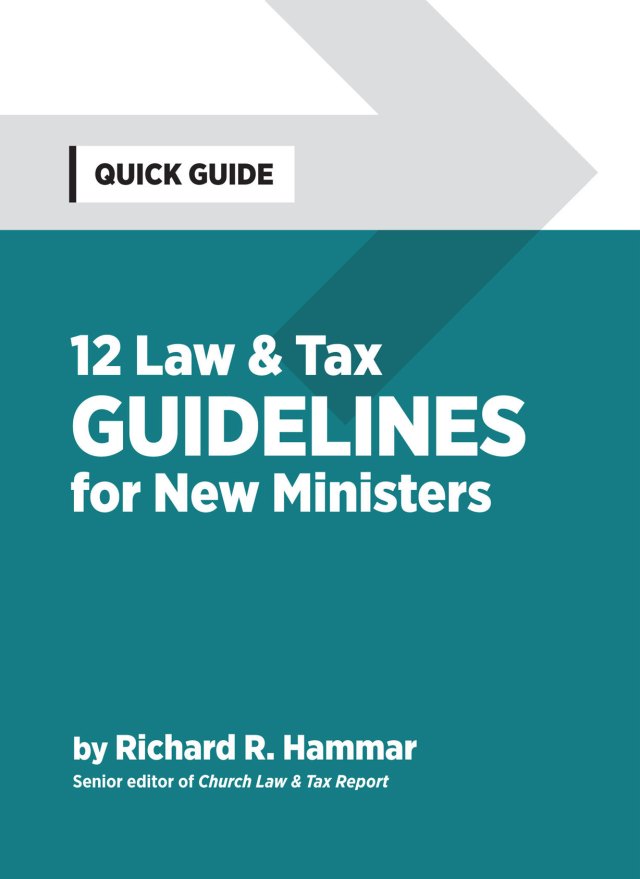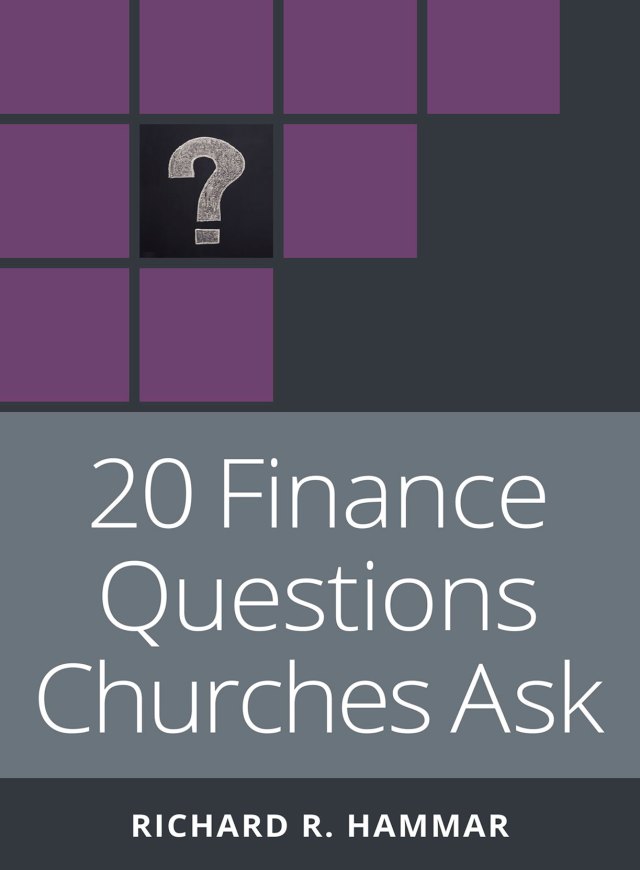The United States Tax Court reaffirmed the so-called Deason rule in a recent decision.
In 1964, the Tax Court ruled that section 265 of the Code (which denies a deduction for any expense "allocable" to tax-exempt income) prevented a minister from deducting his unreimbursed transportation expenses to the extent that they were "allocable" to his tax-exempt housing allowance. Deason v. Commissioner, 41 T.C. 465 (1964).
To illustrate this principle, assume that a minister receives compensation of $30,000, of which $10,000 is an excludable housing allowance, and incurs unreimbursed business expenses of $3,000. Since one-third of the minister's compensation is "tax-exempt" ($10,000 of $30,000) he should not be permitted to deduct one-third of his business expenses since they are "allocable" to tax-exempt income and their deduction would amount to a "double deduction."
Accordingly, the minister should be able to deduct only $2,000 of the $3,000 of business expenses. This was the conclusion reached by the Tax Court in the Deason decision in 1964. The IRS agreed with the Deason ruling, but did not enforce it for several years. Unfortunately, this position changed following a 1988 decision of the United States Tax Court Dalan v. Commissioner, T.C. Memo. 1988-106.
The Dalan case involved an ordained minister who was employed by a public school system as a guidance counselor and who also served as minister of a local church. The minister's church compensation for the years under examination consisted of housing allowances of $4,800 in each year, and additional compensation of $600 in one year and $500 in the next. The minister claimed business and professional expenses of $5,917 and $3,462 in the years in question.
The IRS audited the minister's tax returns, and claimed that "since 89% and 91% of the income earned by [the minister during the years under examination] in the performance of his duties as a minister is not includable in gross income … by virtue of its designation as a housing allowance, the expenses allocable to such exempt income are not deductible under section 265" of the Internal Revenue Code, which provides that "no deduction shall be allowed for any amount otherwise allowable as a deduction which is allocable to one or more classes of income … wholly exempt from [federal income tax]."
Stated another way, since 89% of the minister's church compensation for the first year under examination was not included in gross income ($4,800 of total church compensation of $5,400 was excluded from gross income as a housing allowance), 89% of clergy business and professional expenses incurred in that year should not have been deducted. Similarly, since 91% of the next year's church compensation was not included in gross income ($4,800 of total church compensation of $5,300 was excluded from gross income as a housing allowance), 91% of clergy business and professional expenses in that year should not have been deducted. This left allowable deductions for business and professional expenses of $650.90 and $311.61 for the years in question (instead of the $5,917 and $3,462 claimed by the minister).
In a recent decision, the Tax Court again has reaffirmed the conclusions that it reached in the Deason and Dalan cases. A Presbyterian minister received church compensation of $28,829 and a housing allowance of an additional $10,280 in 1987, and church compensation of $27,300 and a housing allowance of an additional $12,285 in 1988. He reported his taxes as a self-employed worker on Schedule C, and claimed business expense deductions of $4,929 in 1987 and $3,832 in 1988.
The IRS audited the minister's tax returns for 1987 and 1988, and concluded that the business expenses were not deductible "to the extent such expenses are allocable to" the minister's tax-exempt housing allowance. The IRS relied entirely on the Tax Court's decisions in the Deason and Dalan cases. The minister appealed to the Tax Court. He argued that his case was distinguishable from the Dalan case because, in the Dalan case, the taxpayer was only a part-time minister who had other income, and the ministerial expenses far exceeded the ministerial earnings.
Accordingly, the disallowed expenses in the Dalan case were proper because the ministerial expenses necessarily had to be paid or borne by nonministerial earnings. In the present case, however, the taxpayer was a full-time minister, who had no income other than his ministerial earnings, and the ministerial earnings far exceeded the ministerial expenses. As a result, the ministerial expenses were fully paid out of ministerial income. Therefore, section 265 is not applicable.
The Tax Court rejected the minister's arguments. It noted that section 1.265-1(c) of the income tax regulations specifies that "if an expense or amount otherwise allowable is indirectly allocable to both a class of nonexempt income and a class of exempt income, a reasonable proportion thereof determined in the light of all the facts and circumstances in each case shall be allocated to each." The Court concluded:
The arguments advanced by [the minister] are not supported by section 265 and the cited regulation. The expenses incurred by [the minister] are indirectly allocable to a class of nonexempt income and a class of exempt income. Therefore, [the IRS] is sustained in disallowing the portion of the expenses allocable to the parsonage allowance which is excluded from gross income under section 107. For 1987, [the taxpayer's] total ministerial income was $39,109, which consisted of $28,829 taxable income and $10,280 exempt income. The exempt earnings, therefore, represent 26.29 percent of [the taxpayer's] total ministerial income. It follows that 26.29 percent of the $4,929 expenses otherwise allowable are not deductible. For 1988, total ministerial income was $39,585, comprised of $27,300 taxable and $12,285 tax-exempt income. The tax-exempt income, therefore, constitutes 31.03 percent of total ministerial earnings. Therefore, 31.03 percent of the $3,832 expenses for 1988 are not deductible.
This is a disturbing decision, because it perpetuates a completely erroneous position. A compelling argument can be made that the Deason and Dalan rulings make no sense. The IRS (and the Tax Court) are saying that clergy must reduce their business expenses by the percentage of their total compensation that consists of a tax-exempt housing allowance. This is nonsensical, since clergy cannot pay for business expenses out of such tax-exempt income because the tax-exempt income is used entirely to pay for housing expenses.
The housing allowance is excludable, under section 107 of the Code, only "to the extent used to rent or provide a home." That is, the housing allowance is excludable only to the extent that it is in fact used to pay for housing-related expenses. This being the case, it is absolutely impossible for one cent of the "tax-exempt" housing allowance to be used for paying a minister's business and professional expenses. Business and professional expenses are neither directly nor indirectly "allocable" to a minister's tax-free housing allowance. In some cases, non-clergy taxpayers doubtless receive tax-exempt income, and use that income to pay business expenses.
There may be some logic in requiring such taxpayers to reduce their business expense deductions by the percentage of their total compensation that is tax-free. However, this makes no sense in the case of a minister, whose "tax-exempt income" is tax-exempt only if it in fact is used exclusively for housing-related expenses.
There are practical reasons for not extending the Dalan and Deason rules to clergy. For starters, the IRS has provided clergy with no guidance whatever (in any official form or publication) regarding the Deason rule. As a result, most clergy have never heard of it. And what about clergy who live in church-owned parsonages? Will the Deason rule be applied to them too? If so, how is the reduction in business expenses to be calculated? Do clergy simply divide the fair rental value of their parsonage by their total compensation (including salary and the fair rental value of the parsonage) and then reduce their business expenses by this percentage? How is the fair rental value of the parsonage to be calculated?
Happily, since a housing allowance is not an exclusion for self-employment (social security) tax purposes, no "reduction" in business expenses is required in computing these taxes on Schedule SE. The IRS has confirmed this understanding in a letter to your editor. Further, it is reasonable to assume that the adverse impact of the Deason and Dalan rulings can be eliminated if a church simply adopts an accountable reimbursement arrangement. The reason for this interpretation is that section 265 reduces any deduction for business expenses allocable to tax-exempt income. Under an accountable reimbursement arrangement, however, there is no "deduction" claimed since the employer's reimbursements are not reported as income. The IRS has yet to rule on this interpretation of the law.
Some tax advisors have been advising clergy to disregard the Deason and Dalan rulings in computing their taxes. Until there is further clarification from the IRS or the courts, we categorically reject such counsel and urge clergy to comply. The comprehensive clergy tax reporting examples set forth in chapter 11 of Richard Hammar's Church and Clergy Tax Guide (available from the publisher of this newsletter) show how to incorporate the Deason rule in the preparation of clergy taxes. Your editor is currently engaged in efforts to exclude clergy from the Deason and Dalan rulings. Any developments will be reported to you immediately in this newsletter. McFarland v. Commissioner, T.C. Memo. 1992-440.
Example. Rev. Smith is senior minister of First Church. In 1992 he receives church compensation of $40,000, which includes a housing allowance of $10,000 (Rev. Smith's actual housing expenses exceeded $10,000 for the year). His business expenses for 1992 total $4,000. He did not "account" to his employer for any of this amount. Rev. Smith will be able to deduct only $3,000 of his business expenses in computing his income taxes. He must reduce his business expense deduction ($4,000) by the percentage of his total compensation that is "tax-exempt." Since 25% of his total compensation consists of a tax-exempt housing allowance (the $10,000 housing allowance is 25% of $40,000 total compensation), Rev. Smith must reduce his business expense deduction by 25%. Reducing $4,000 by 25% leaves a deduction of $3,000 for income tax purposes.
It is possible that this limitation could have been avoided completely had First Church adopted an accountable reimbursement arrangement agreeing to reimburse Rev. Smith for substantiated business expenses, and requiring him to return any excess reimbursements. Finally, note that Rev. Smith will be able to claim the full $4,000 of business expenses in computing his self-employment taxes on Schedule SE (since the housing allowance is not "tax-exempt" income for social security purposes).




